Woodpeckers are one of the most fascinating avians you can find in your backyard – and did you know that there are 8 species in Nebraska?
There’s a good chance that if you have more than one woodpecker visiting you, you may actually be playing host to a few different species!
Although the list below contains all the usual woodpeckers found in Nebraska, it’s possible to find a vagrant species of woodpecker that’s not native to this particular state. If you do see a vagrant species, it should be considered an extremely rare sighting!
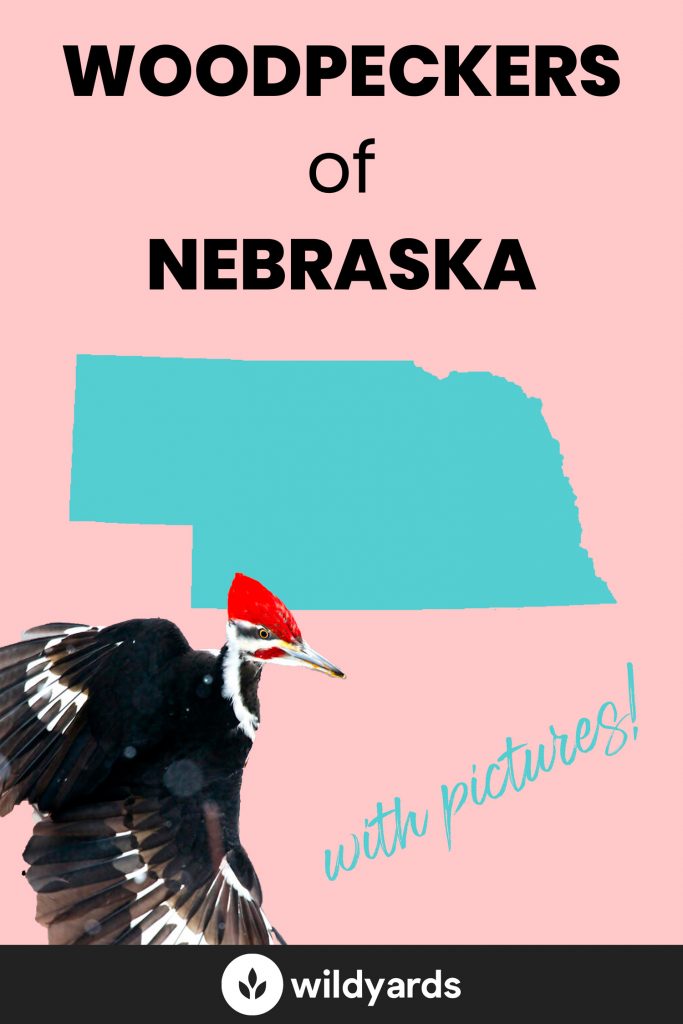
The following legend can be used for each woodpecker species map to determine what time of year you can see each woodpecker in your area.
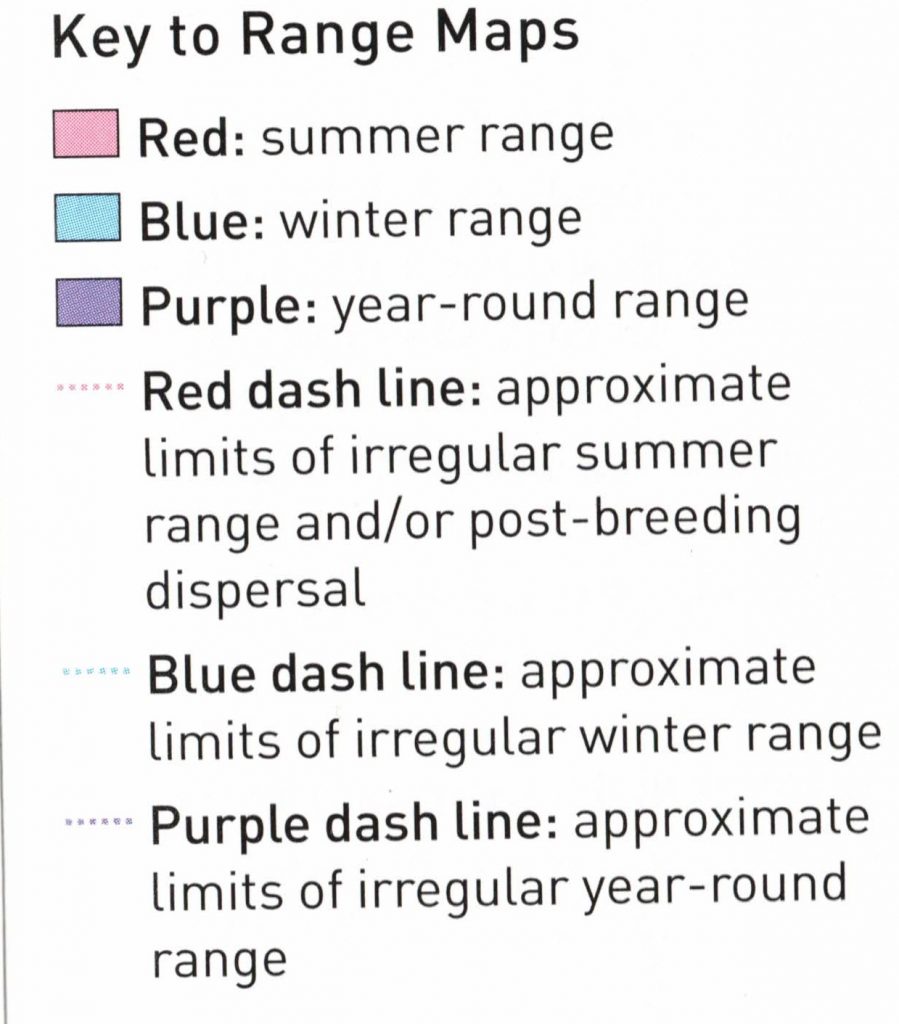
8 woodpecker species are found in Nebraska, including the Northern Flicker, Red-Bellied Woodpecker, Hairy Woodpecker, Red-Headed Woodpecker, Lewis’s Woodpecker, Yellow-Bellied Sapsucker, Downy Woodpecker, and Red-Naped Sapsucker. Several of these woodpecker species are permanent residents, while others are much rarer and can be only spotted seasonally.
The 8 Woodpecker Species in Nebraska
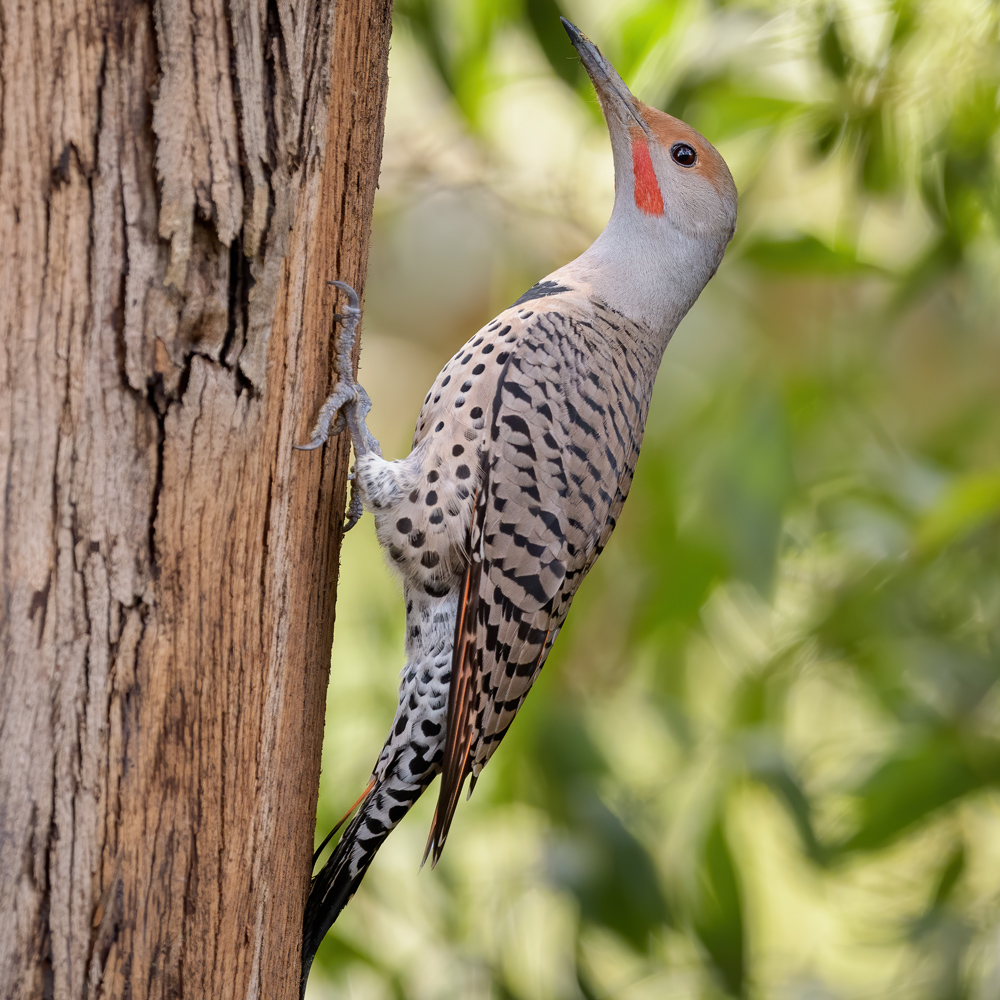
Northern Flicker
Colaptes auratus
Order: Piciformes
Family: Picidae
Size: 11.0 – 12.2 in (28 – 31 cm)
Overview
This Picidae is known by many, many different names – and you may well have seen it referred to as the Yellow or Red-shafted Flicker. It’s a fairly common bird and is also one of the largest woodpeckers living across the states. Unlike most peckers, however, they tend to feast mainly on ground insects – ants, in particular! This Flicker will choose to hop around to eat, but may even choose to site itself on branches occasionally when it fancies a fruit treat or two.
How to Identify
The Northern Flicker has plumage colors that can vary (hence its many names), but you can commonly spot these birds thanks to their flecked tails and wings. They often have black markings around their faces and crests, and you’ll be able to tell them apart from other Picidae on sheer size alone.
Northern Flicker Range & Migration Map
Northern Flickers tend to live out east but can be found high up in the northwest reaches of Alaska, and even down towards the west coast – that applies to the yellow-shafted variety, in any case! Flickers of this genus tend to be fairly common across the US, with almost ten million specimens estimated at present in North America.
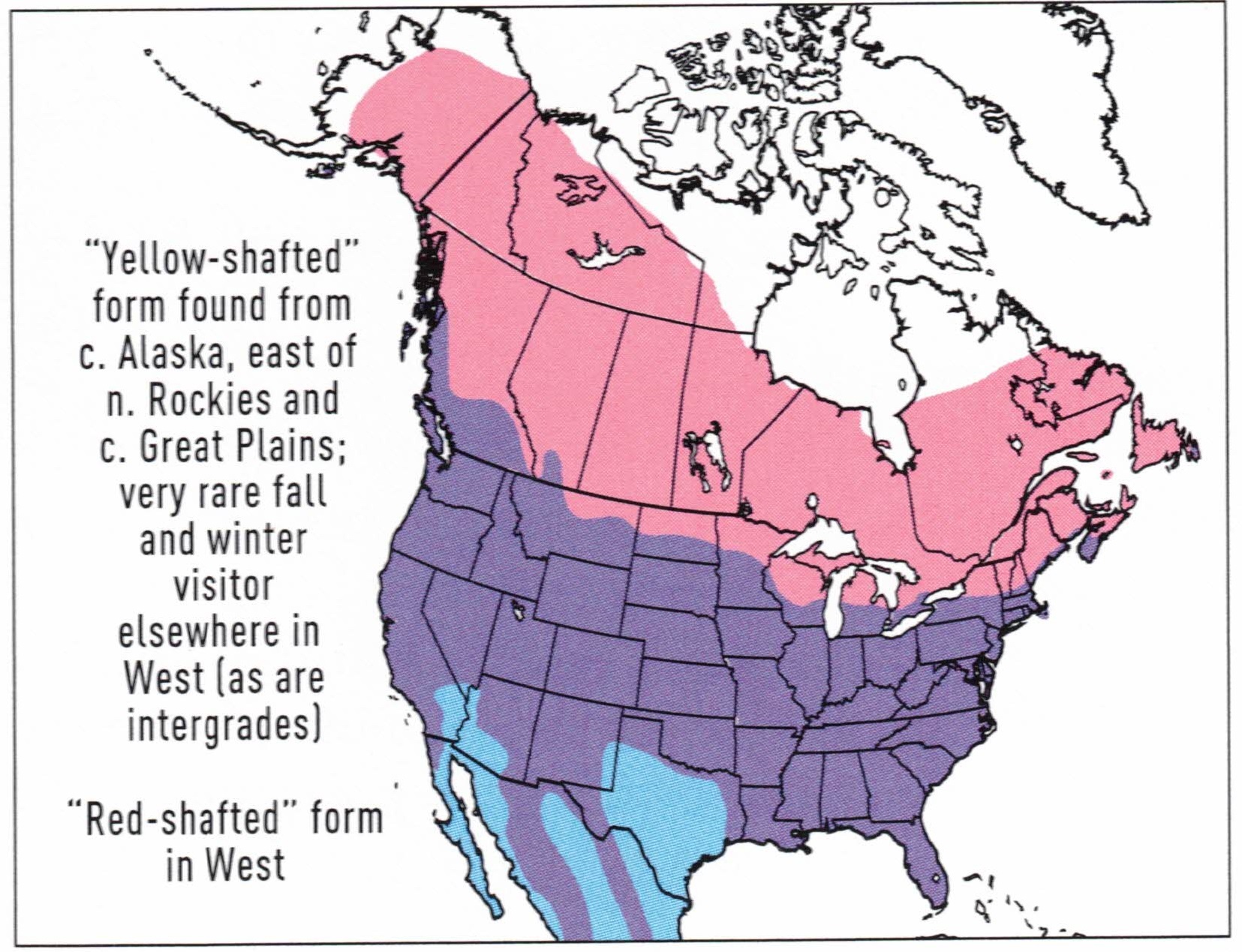
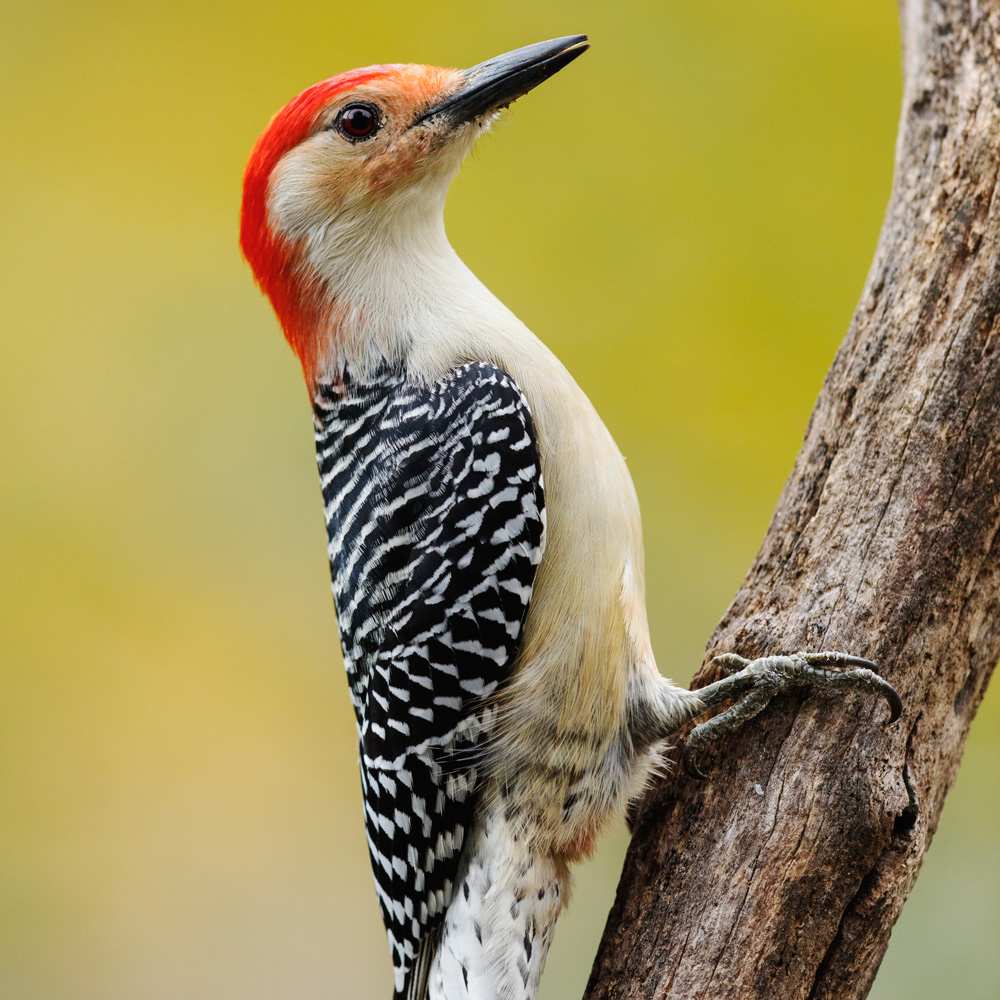
Red-bellied Woodpecker
Melanerpes carolinus
Order: Piciformes
Family: Picidae
Size: 9.4 in (24 cm)
Overview
Increasingly common, the red-bellied woodpecker tends to enjoy flocking to backyard feeders and has a call you might just recognize. They only ever drum during mating or attraction, and if you’ve ever tried to tell these birds apart in terms of gender – it’s almost impossible on glance alone. This is a mid-sized bird that doesn’t tend to do too much damage to trees, it’s one of the gentler woodpeckers you’ll find in the US wilds. They tend to prefer pecking away at hardwoods and will flock to forests when they aren’t at the feeder.
How to Identify
The red-bellied woodpecker, of course, has a red stomach, but you will mainly know it for its red-tinged crown and its bar-coated feathers, as well as a brown-colored front and face. Again, it’s hard to tell the males and females apart.
Red-bellied Woodpecker Range & Migration Map
These woodpeckers tend to be common sights out towards the east and southeastern states, from Texas out to Florida. They don’t tend to move around too much, particularly as they will steal nesting spots from other birds!
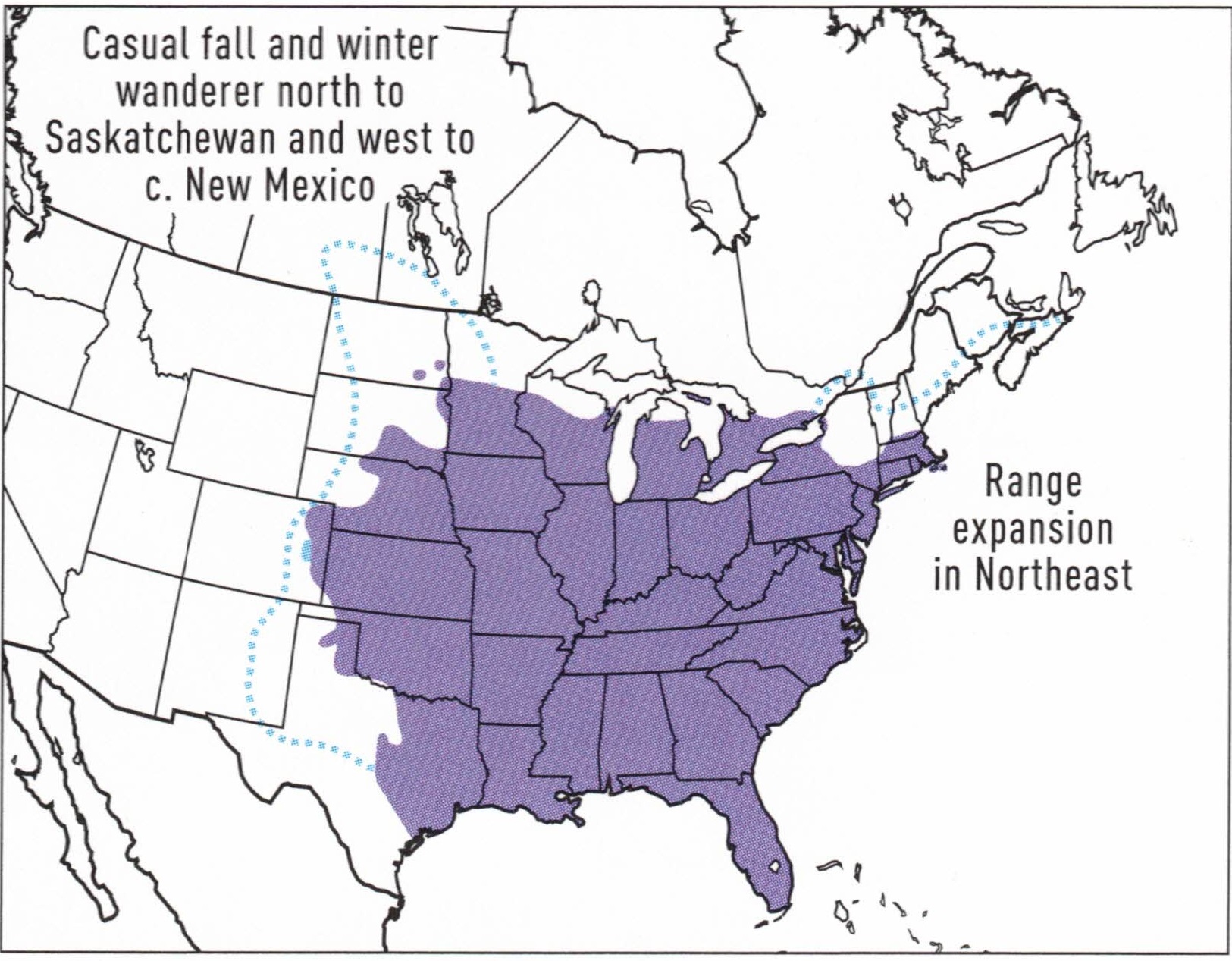
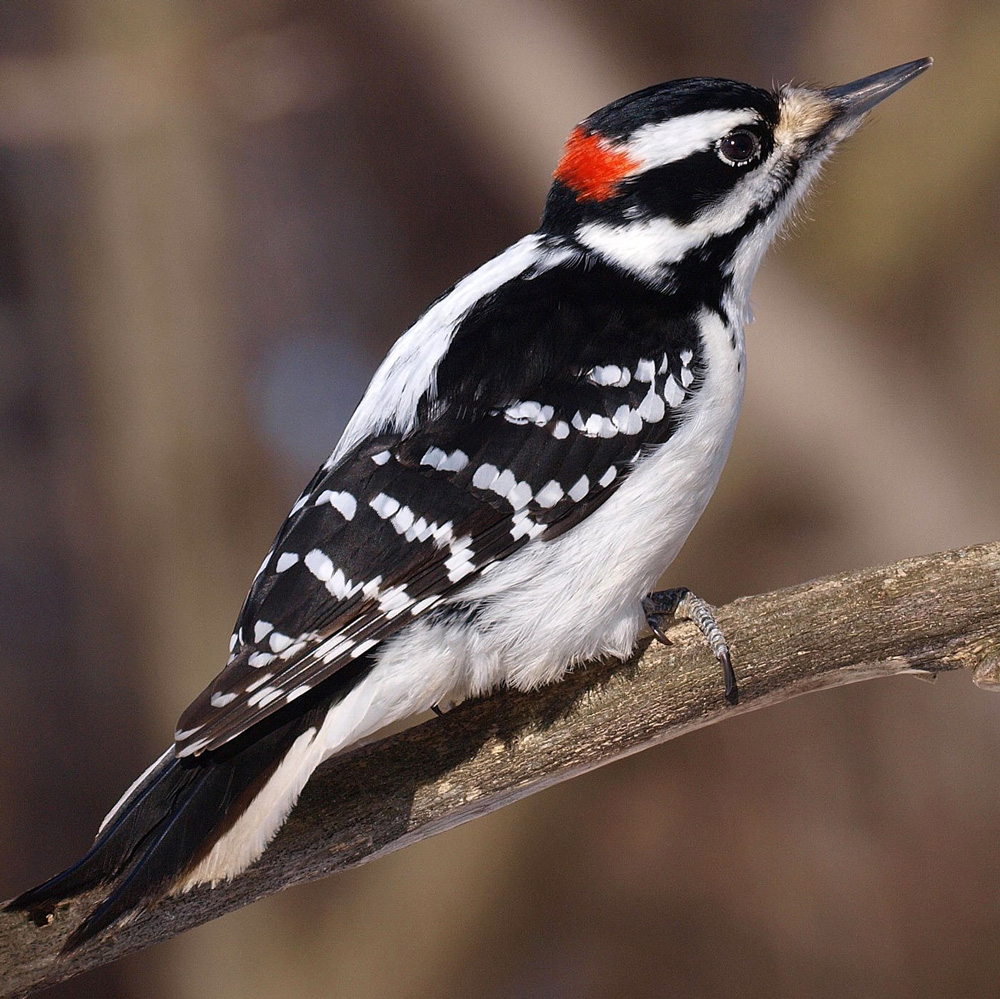
Hairy Woodpecker
Dryobates villosus
Order: Piciformes
Family: Picidae
Size: 7.1 – 10.2 in (18 – 26 cm)
Overview
If there is a chance you’re going to spot a woodpecker in your backyard somewhere in the states, then it’s probably going to be a hairy species! The Dryobates villosus is extremely common, but it’s actually fairly shy and retiring. They have very simple calls but will be happy to drill and drum on just about anything. They are also prime opportunists – they’ll steal sap from holes drilled by other birds! The hairy woodpecker is also known for its mighty peck – it looks small, but it drills loudly!
How to Identify
The hairy woodpecker naturally has a fairly hairy appearance, though it’s also notable for its relatively long, pointed bill, as well as its distinct black and white coloring. Some species, however, can carry a brownish tint. They are generally white to the chest and are speckled to the wings.
Hairy Woodpecker Range & Migration Map
Where to start? This Picidae doesn’t tend to be fussy about climate, though you’ll normally see it amongst conifers. There are more than eight million of these birds across the continent, and their numbers are growing – there are no particular states where they are most prolific.
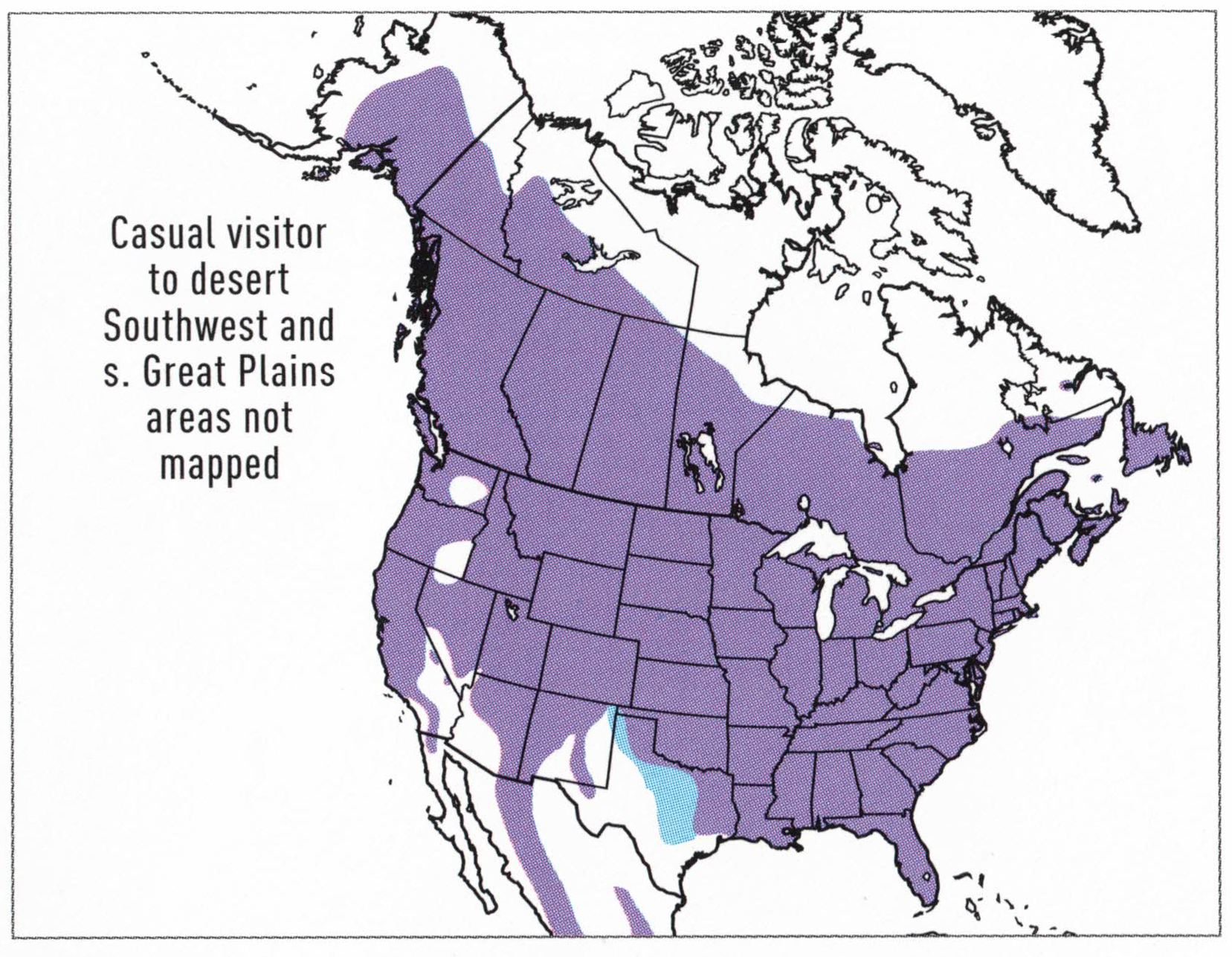
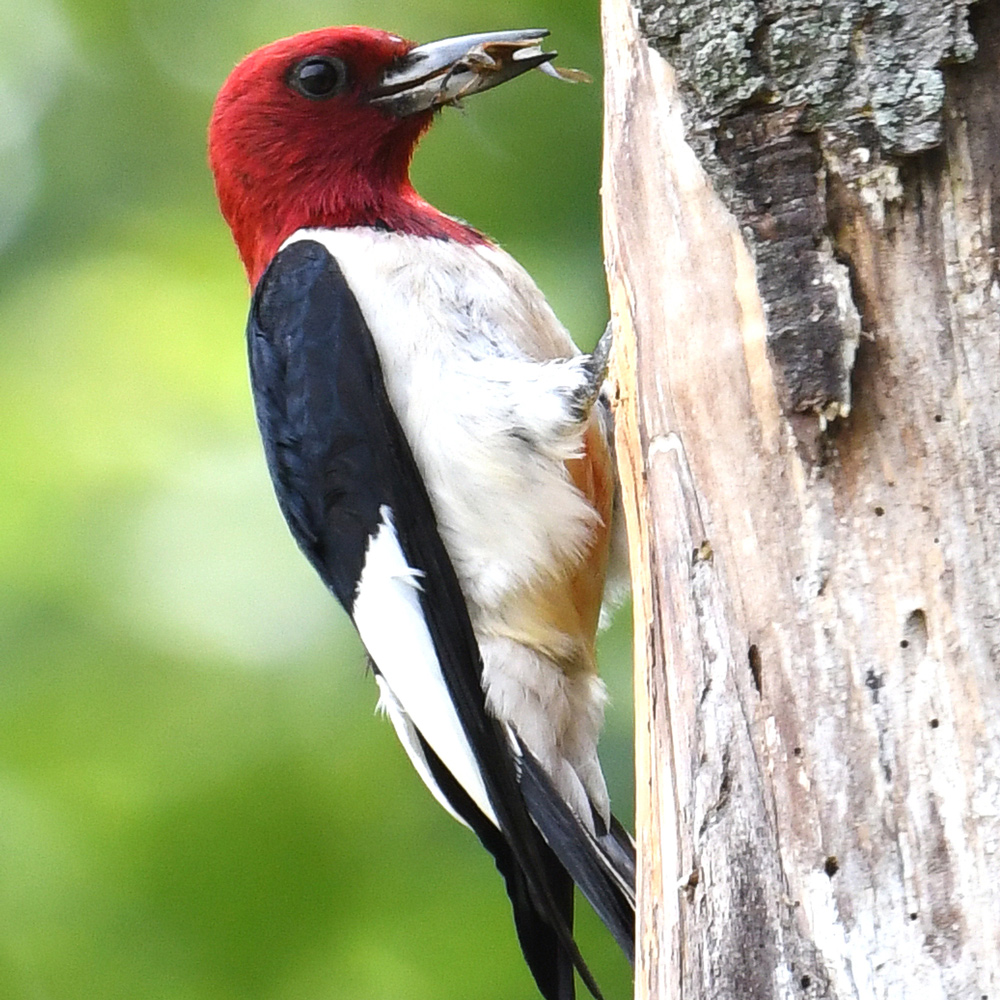
Red-headed Woodpecker
Melanerpes erythrocephalus
Order: Piciformes
Family: Picidae
Size: 7.5 – 9.1 in (19 – 23 cm)
Overview
This large, boldly-colored bird is a wonderful sight for many, and while you might not hear it call too often, its rattles and drumming on trees will likely be a common sound across its native states. However, it doesn’t actually peck at trees for food – it snatches flying beasts as they flitter past. This woodpecker has sadly fallen in numbers over the years due to food scarcity. However, when it can’t snatch a bug or two, it happily feasts on nuts and acorns.
How to Identify
Their name is a giveaway – they have bright red crowns and heads, with white body feathers and monochrome wings and tails. You probably won’t hear their calls too loudly.
Red-headed Woodpecker Range & Migration Map
These acorn-foraging birds frequent the eastern to central states, stretching up as far as outer Canada. They tend to enjoy the warmer reaches, however, as they will frequent spots in Florida and down in New Mexico.
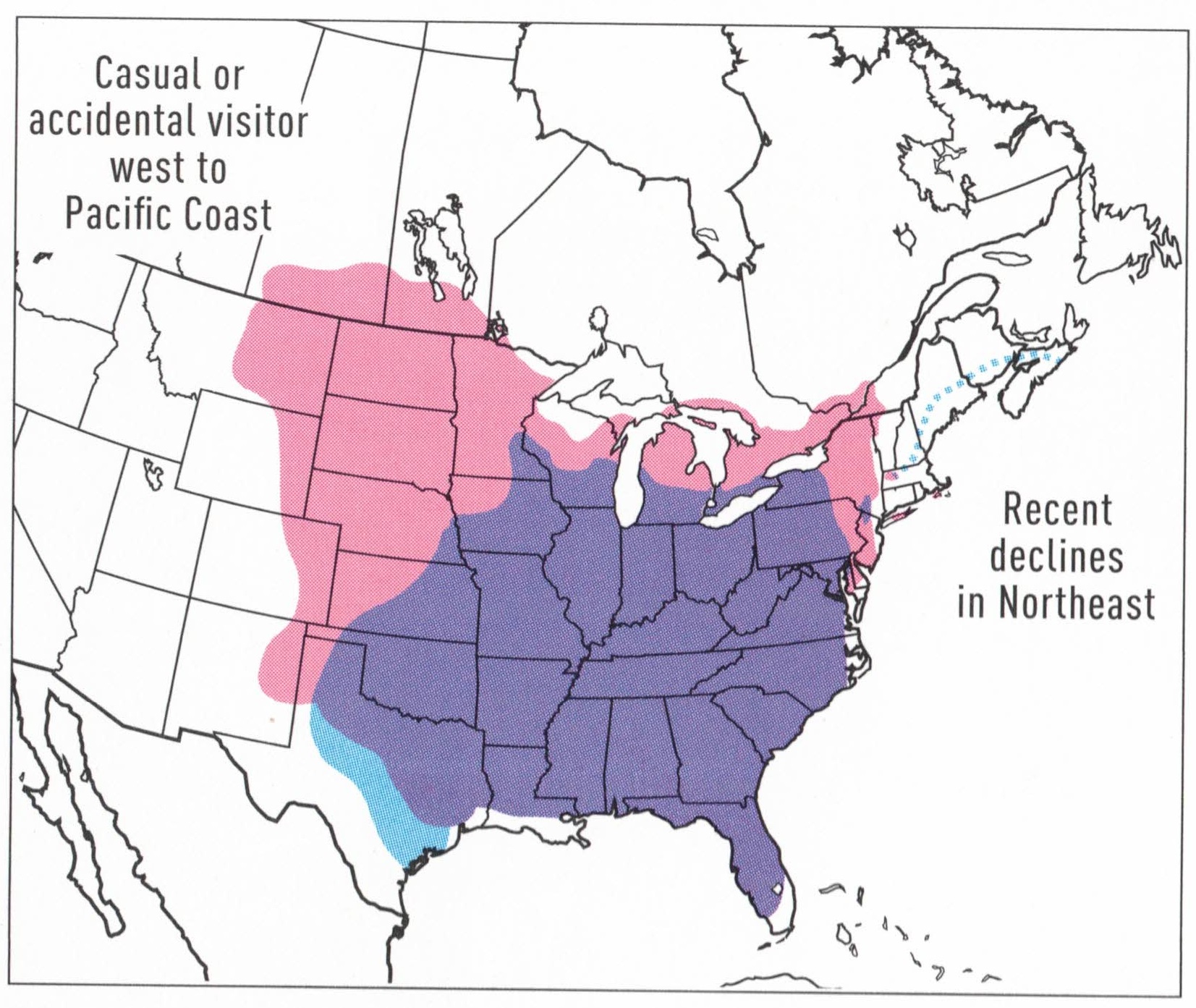
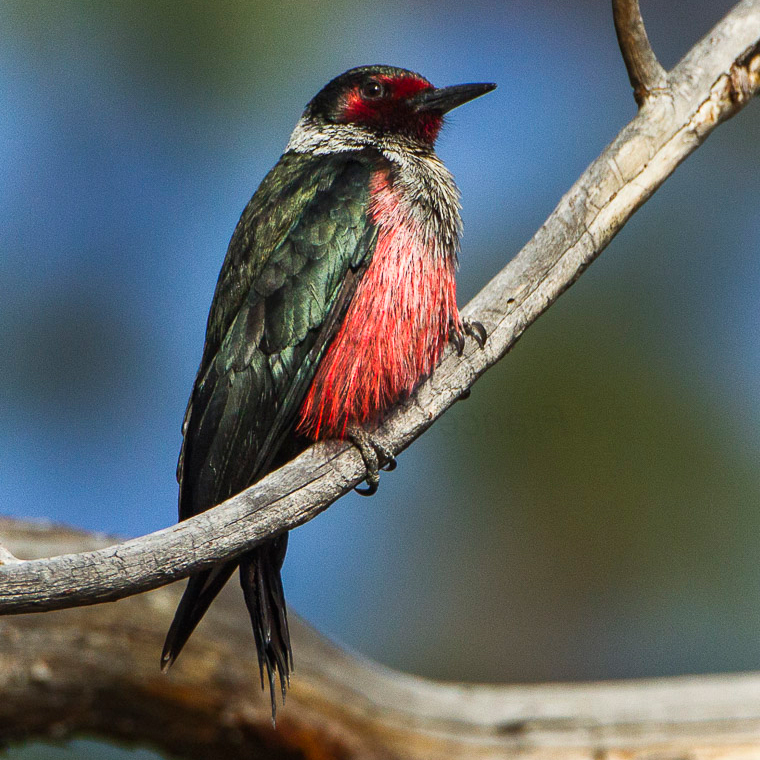
Lewis’s Woodpecker
Melanerpes lewis
Order: Piciformes
Family: Picidae
Size: 10.2 – 11.0 in (26 – 28 cm)
Overview
The Lewis’s Woodpecker is fairly rare, but also pretty hard to miss when you do spot one! This is a curious woodpecker in that it doesn’t tend to peck into wood for grubs – instead, it’s more partial to consuming the odd flying critter. Unfortunately, this is another woodpecker whose numbers are fairly rare, as its habitat is shrinking. The Lewis’s Woodpecker is a little bit of a nomad in its nature, in that it will be happy to search for food in various territories across the year. However, you’ll normally find it in burned forests and pineland.
How to Identify
Boasting gorgeous red and black features, Lewis’s woodpecker tends to be rosy around the face and beak, and to the crest and front plumage. You’ll find it has a magnificent, sweeping, black plumage to the wings and tail. You likely won’t hear it pecking or drilling.
Lewis’s Woodpecker Range & Migration Map
Lewis’s woodpecker, while uncommon, tends to be spotted to the southwest, as far out east as Oklahoma, and normally takes up refuge in forests. However, you’ll also find it in some spots of California – a rare spot that’s very rewarding.
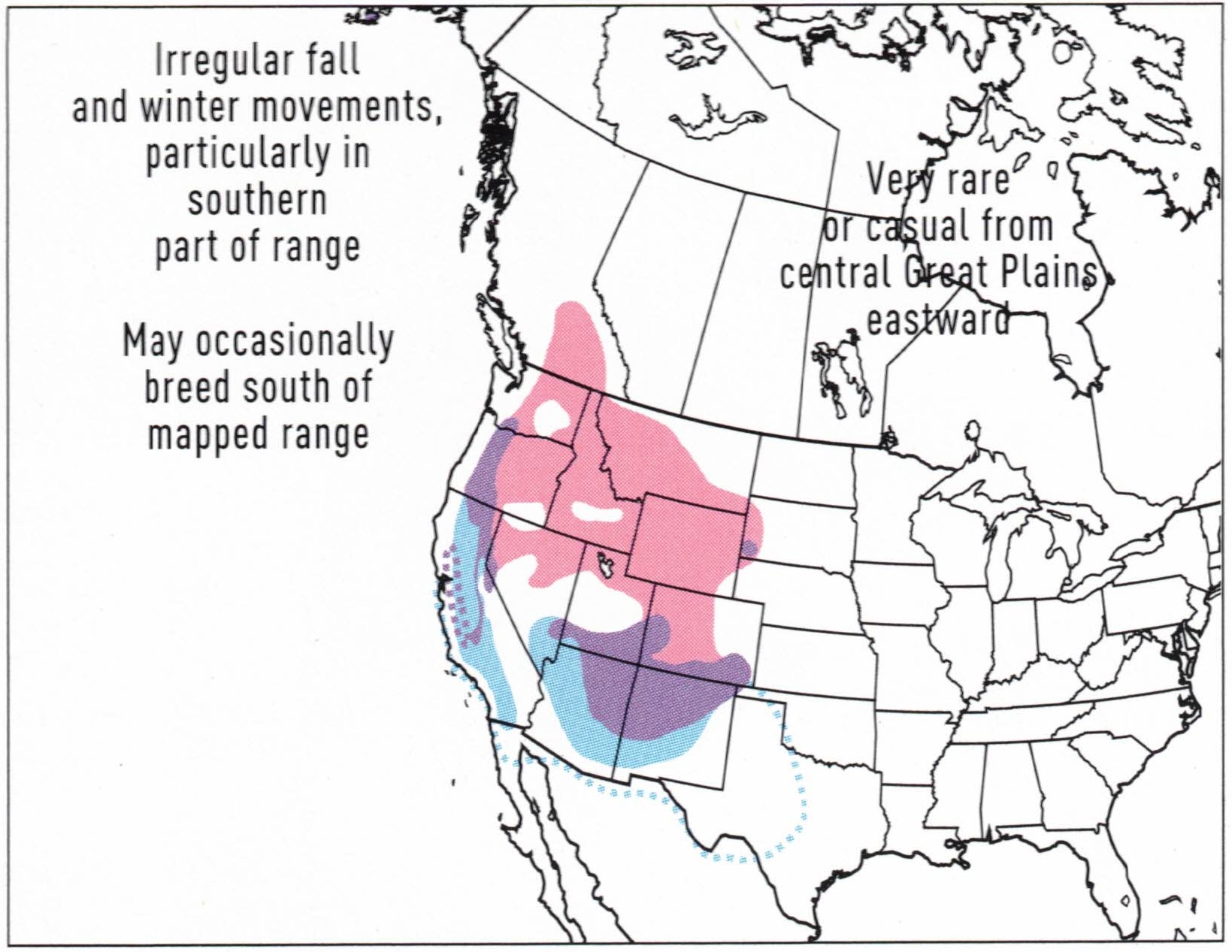
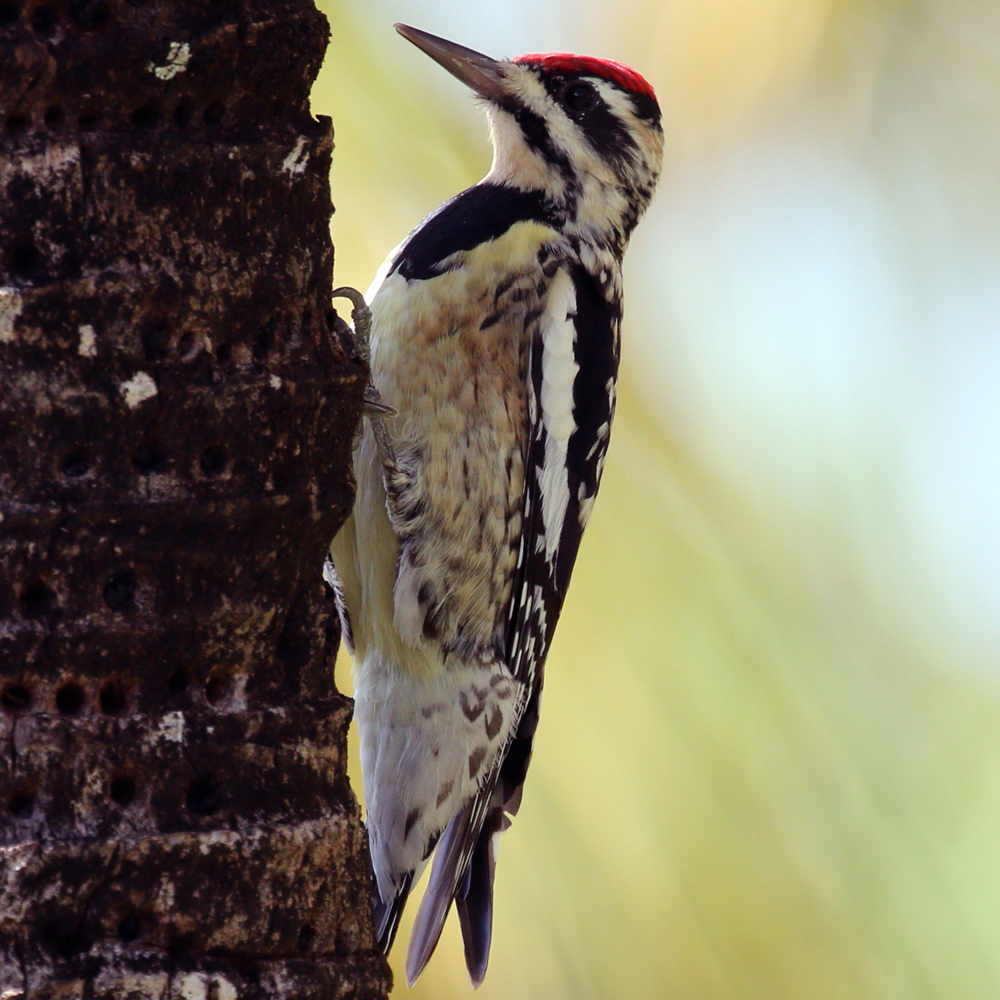
Yellow-bellied Sapsucker
Sphyrapicus varius
Order: Piciformes
Family: Picidae
Size: 7.1 – 8.7 in (18 – 22 cm)
Overview
This woodpecker is a variety of bird that will happily drill holes to drink tasty sap from within, something that’s very welcoming to other species. These birds are fairly similar to other sapsuckers in terms of behavior and in terms of looks. Yellow-bellied sapsuckers tend to be very unique drillers – you will likely recognize their staggered pecking if they happen upon wood or metal near your yard. These birds are known for pecking and making nests extremely high up – over 6,000 feet in the air.
How to Identify
As the name suggests, you will normally be able to spot a yellow-bellied sapsucker for its bright stomach, however, it often has a reddish crown and nape, with stunning black and white bars and flecks down its body, tail, and wings.
Yellow-bellied Sapsucker Range & Migration Map
The Yellow-bellied Sapsucker is the most migratory woodpecker in the world, breeding as far north as eastern Arkansas and the northern boreal forest, and wintering as far south as Panama and the Caribbean. Much like other US native sapsuckers, this bird will normally be found in forest spots, though this species will migrate from the central plains and lower midwest southward towards the west of the Appalachians.
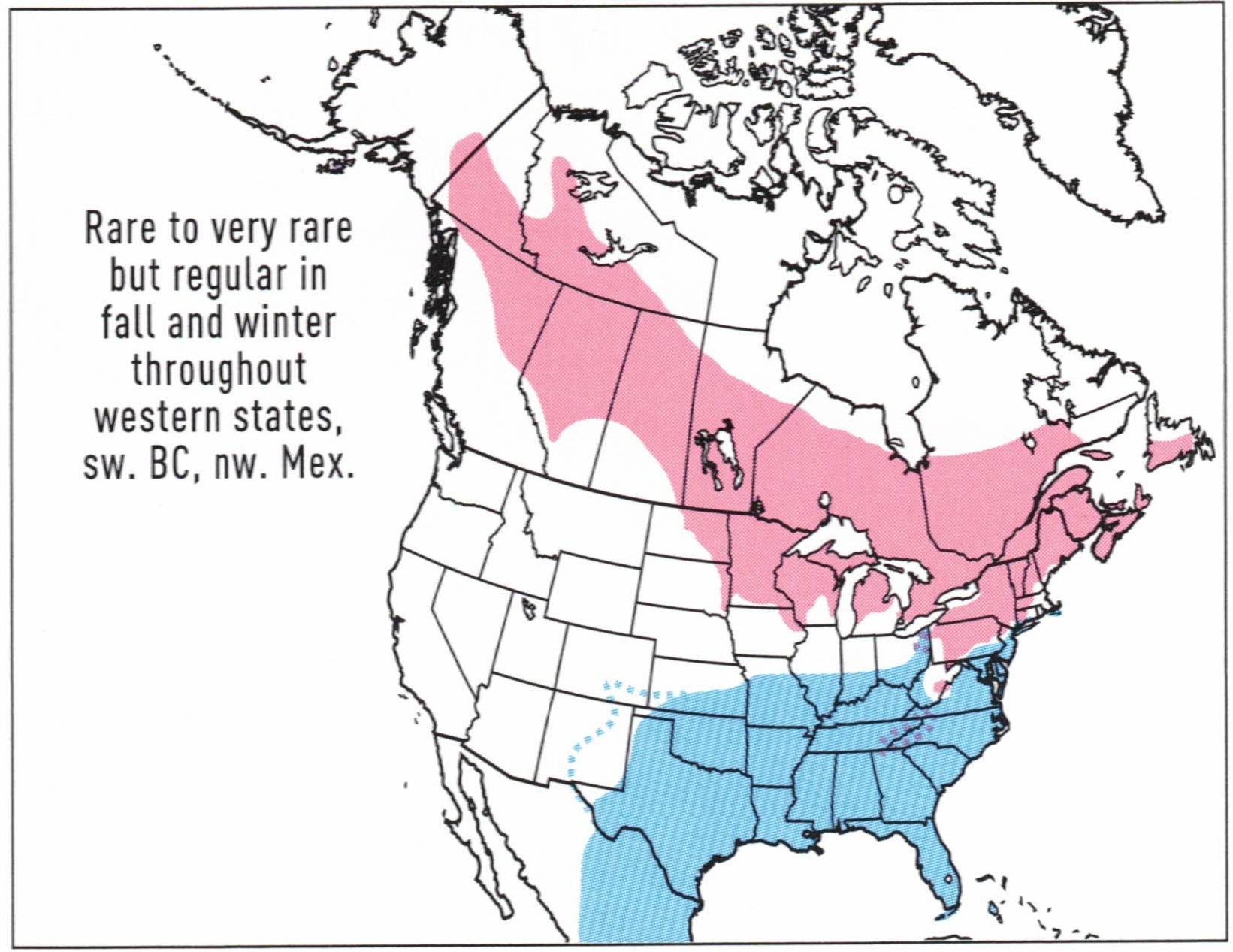
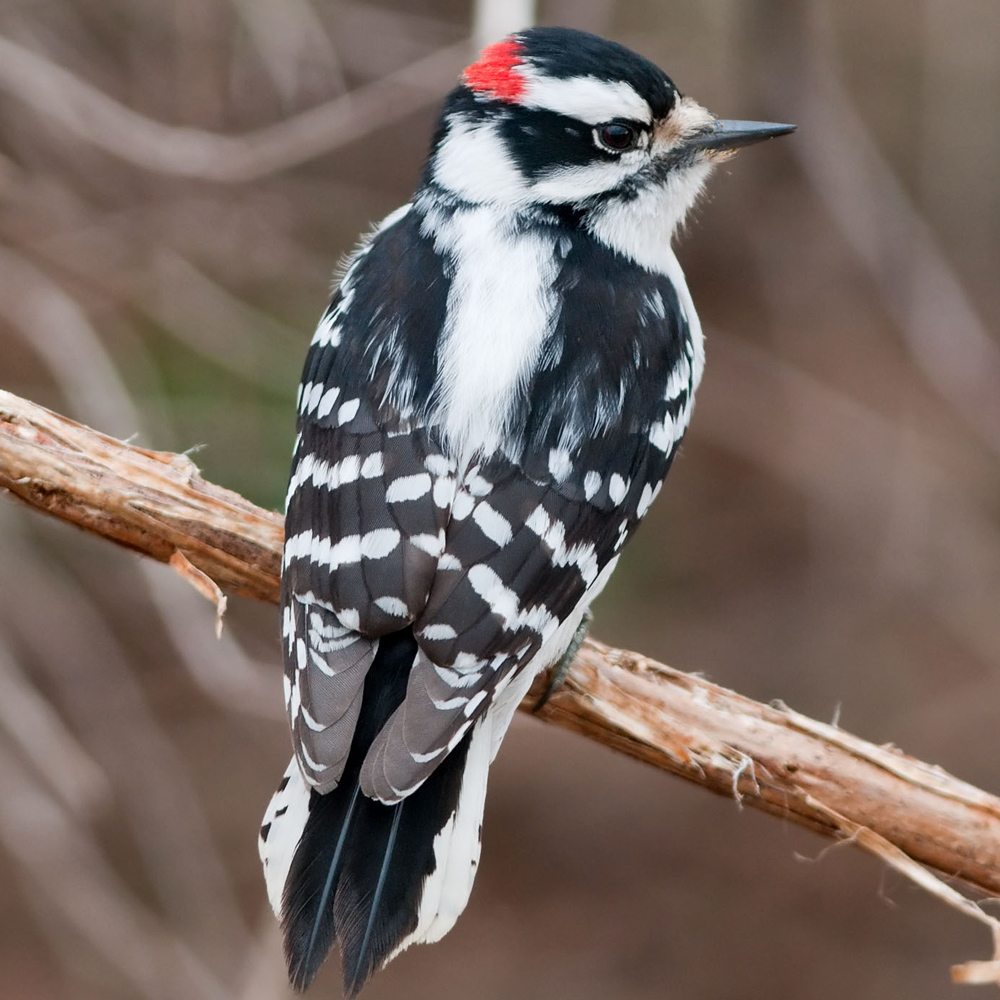
Downy Woodpecker
Dryobates pubescens
Order: Piciformes
Family: Picidae
Size: 5.5 – 6.7 in (14 – 17 cm)
Overview
Truly tiny, the cute downy woodpecker is a Picidae that’s common across the north to central states. In fact, they are the smallest native woodpeckers in the country. They tend to prefer milder climates on the whole but are known to travel around. They use sharp, single calls, and tend to enjoy feeding on seeds in feeders. If you have any woodpeckers in your backyard, there is a very good chance it is a Dryobates pubescens. They are just bigger than your common garden sparrow.
How to Identify
Exceptionally small but unabashedly noisy, the downy woodpecker is largely black and white with spots, and the males tend to have red crowns. They have varying spots and stripes across their wings and feathers – meaning that neither one nor two may ever look the same!
Downy Woodpecker Range & Migration Map
The downy woodpecker lives just about everywhere across the United States, with sightings across states as diverse as Florida and Alaska! If the climate is mild enough – and not too sunny – then there’s every chance you’ll spot this bird in your yard. There are around 13 million of them across the continent.
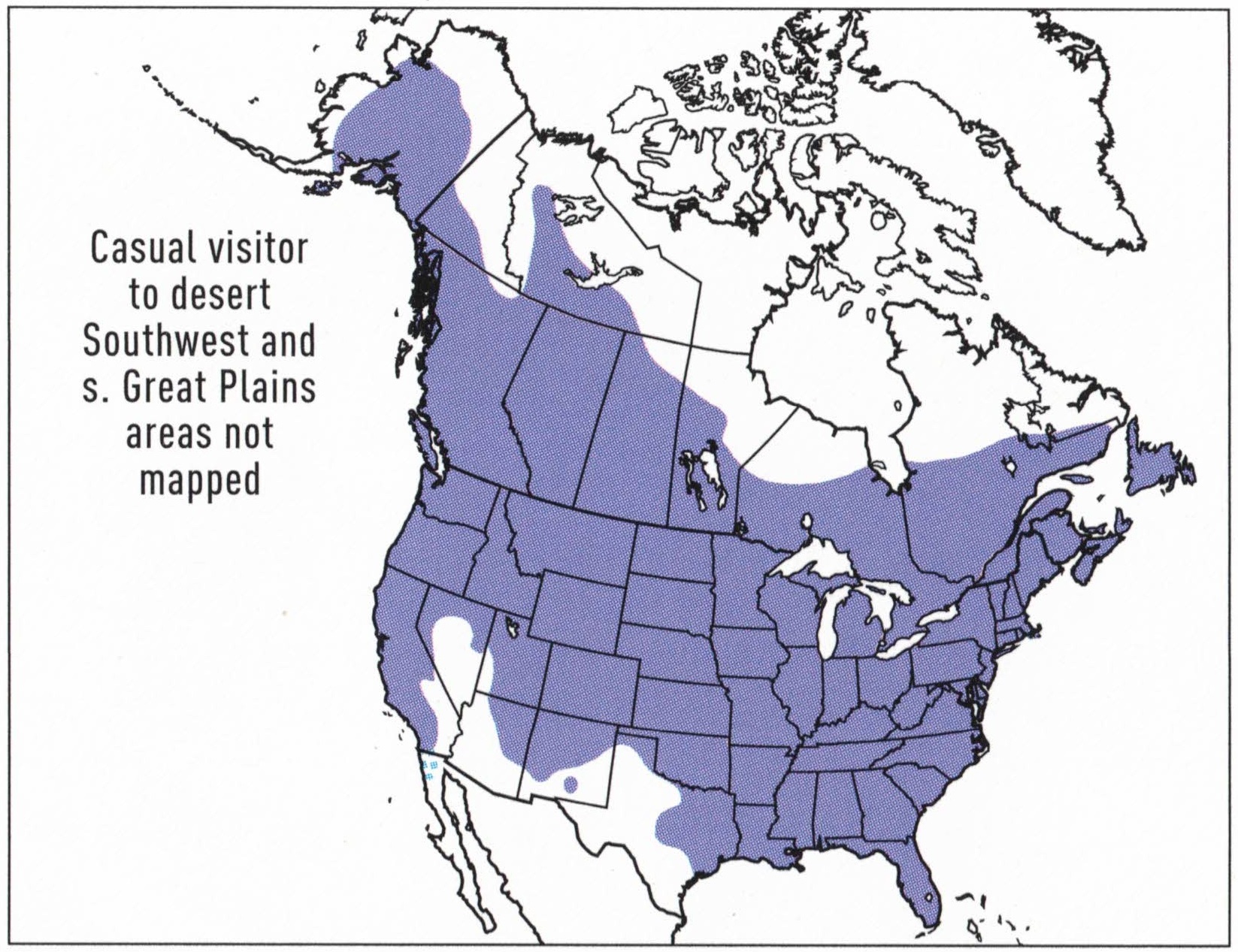
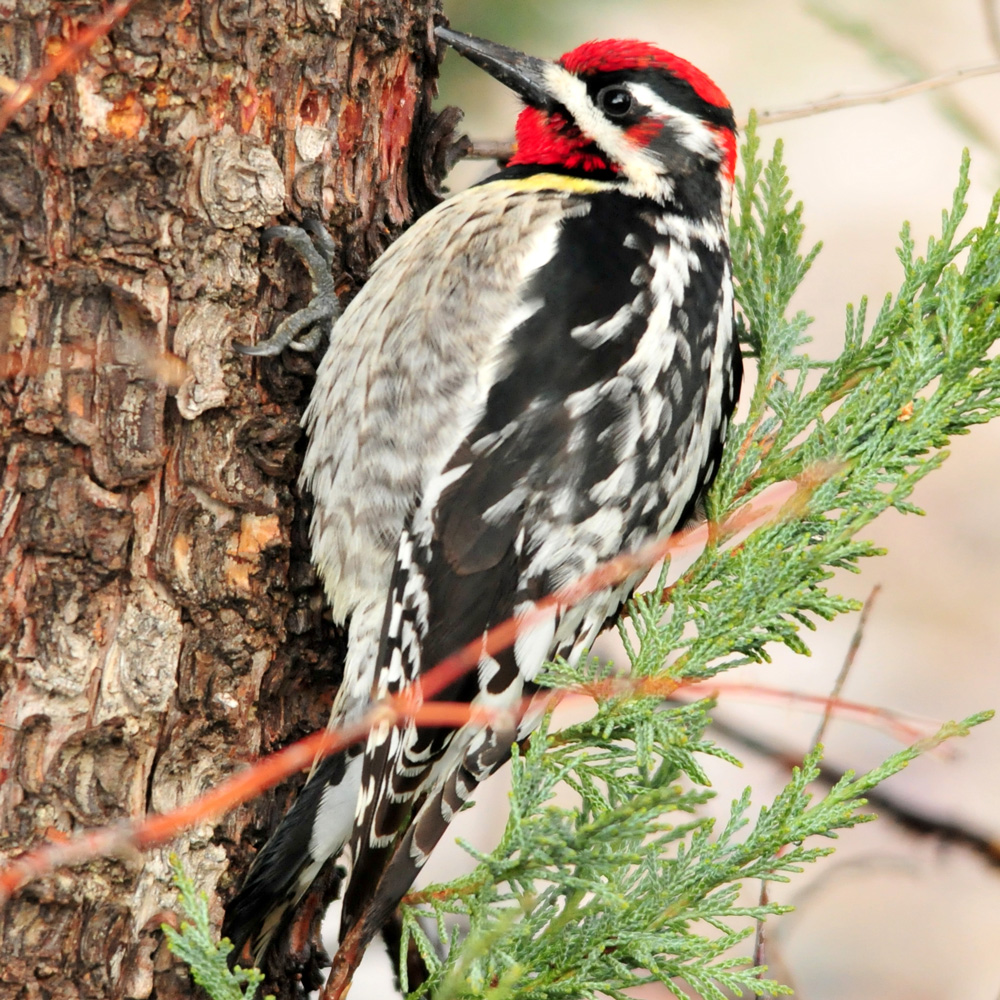
Red-naped Sapsucker
Sphyrapicus nuchalis
Order: Piciformes
Family: Picidae
Size: 7.5 – 8.3 in (19 – 21 cm)
Overview
This popular sapsucker is a common bird that’s growing in numbers – and that’s likely to thrill many woodpeckers elsewhere, as this is a sapsucker likely to leave lots of open holes for tasty sap. You’ll normally spot them out in forests like other sapsuckers, but you may get one or two in your yard if you are lucky enough! This woodpecker has an extraordinarily short tongue for its species, though that helps it to get at its daily sap. These sapsuckers can live to relatively old ages, with the oldest on record being almost five years of age.
How to Identify
The red-naped sapsucker has – of course – a red nape, with white and black markings often emblazoning its face, as well as its crest, body, and wings. It can get quite large, and given that it’s fairly common, you shouldn’t have any problem finding it.
Red-naped Sapsucker Range & Migration Map
These woodpeckers tend to live in the mid-elevation forests of the intermountain West, from the Rocky Mountains westward to the eastern slopes of Washington and Oregon. Most individuals migrate short distances with females migrating further than males on average. The northern birds move south into the western and southwestern United States.
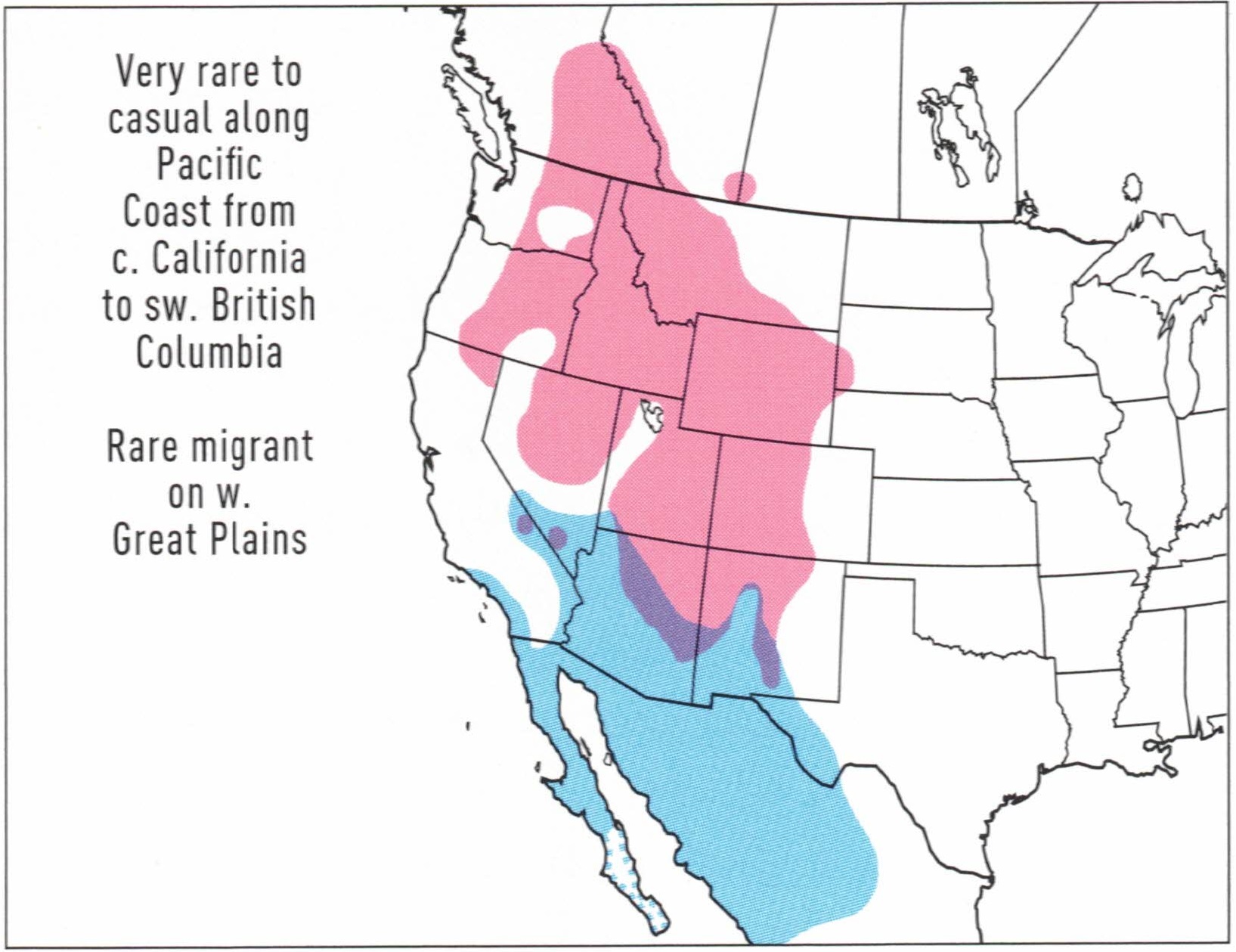
How to Attract Nebraska Woodpeckers to Your Yard
Want to see more woodpeckers in your backyard?
As you can see, there are more than a few wonderful woodpecker species to look out for across Nebraska. Some may not flock to gardens and backyards in favor of forests and woodland reaches – however, there’s a chance a rare bird or two may make its way to you.
If you’re keen to start spotting woodpeckers in your yard, why not take a look at our guide on how to attract woodpeckers? That’ll give you the basics of what’s required to attract woodpeckers.
Then, we’d recommend reading our buyer’s guide on choosing the best woodpecker feeder. Setting up a woodpecker feeder or two is the best way to guarantee that woodpeckers will visit your yard. While you’re at it, do make sure to read our full guide on what to feed woodpeckers, too – as getting their diet right will make a lot of difference!
There are a bunch of other ways to attract woodpeckers such as getting a bird bath and planting native trees that woodpeckers love.
All State Woodpeckers
Want to see what woodpecker species are found in other states? Here’s our complete list of woodpeckers found in each state:
